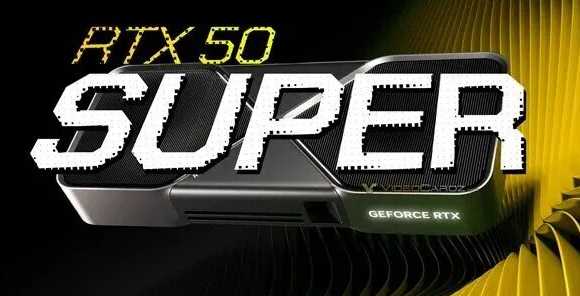
Clear records
history record
cancel
Clear records
history record

cancel
Clear records
history record
Clear records
history record
The RTX 5090 is being snapped up as an investment product, while the SUPER version is delayed until 2026—who's driving up prices so aggressively?
NVIDIA's RTX 50 series lineup is almost set, but the release schedule for the SUPER series has quietly changed.
Originally expected to debut by the end of 2025, the latest reports suggest a delay to Q1 2026, possibly making an appearance at CES 2026, with actual availability for consumers pushed to Q2 2026.
This adjustment carries two implications:
First, AMD's RX 9000 series failed to shake NVIDIA's dominant 94% market share, so there's no urgent need to rush out new products.
Second, NVIDIA is holding back for a longer-term strategy, with the Rubin architecture in 2027 and AI compute cards by late 2026 already in the pipeline. The RTX 50 SUPER seems more like a "gap-filler," specifically targeting mid-to-high-end market segments.

What does the SUPER series actually look like?
Currently, the known models all focus on upgrades to VRAM and power consumption:
RTX 5080 SUPER: VRAM increased from 16GB to 24GB (3GB per chip), power consumption up 15.3% to 415W;
RTX 5070 Ti SUPER: Also boosted to 24GB VRAM, power consumption up 20% to 350W;
RTX 5070 SUPER: Core count slightly increased by 4.2% (6400 CUDA cores), VRAM bumped to 18GB (six 3GB chips), power consumption only up 10% to 275W—clearly positioned as the value-for-money option.
In contrast to the "late arrival" of the SUPER series, the RTX 5090's price has skyrocketed since its launch.
Not only has it not dropped, but the fourth quarter is expected to see even tighter supply. This price surge isn't happening in isolation—it's the result of a "perfect storm."
First, there's the "invisible assist" from new energy vehicle companies. These EV manufacturers have long been major buyers of high-performance GPUs.
Previously, the RTX 4090 was used to train autonomous driving models and process LiDAR and camera data. Now, with the push toward L3/L4 autonomy, data volume and model complexity have exploded. Automakers need to process this data faster to keep up with technological advancements.
The more cars they sell, the more data they collect, and the more 5090s they need—it's a straightforward relationship. Crucially, the 5090 offers significantly better performance than the 4090, saving time on tasks or enabling more complex models within the same timeframe. For automakers, the return on investment is crystal clear.
As a result, companies that previously used 4090s are now upgrading to 5090s in bulk. This stable, deep-pocketed demand has laid a solid foundation for the price surge.
Second, the AIGC-driven "text-to-video" boom is fueling demand. Content creators, short-video producers, and ad agencies are all relying on AI for rapid video generation. Local text-to-image and text-to-video workflows make the 5090's computing power and large VRAM essential. This has led to massive procurement and leasing by large model service providers and cloud computing platforms, creating urgent and substantial demand that further heats up the high-end GPU market.
Third, NVIDIA's own "favoritism" has added fuel to the fire. The 5090 actually uses the same top-tier GPU core as the Pro 6000 series.
NVIDIA reserves the most complete dies (chip cores) for higher-margin professional cards, while defective ones are repurposed for consumer flagships. With weak Pro series sales, NVIDIA naturally allocates fewer high-quality dies, tightening supply for the 5090.
The final spark comes from recent "5090 futures scams." Fraud cases have undermined trust in the traditional "deposit-first" ordering model.
Distributors and system integrators, now wary, are scrambling to buy spot inventory, fearing shortages. With spot supplies being snapped up, prices have been driven to astronomical levels—a vicious cycle.
Thus, this price surge is underpinned by new energy automakers' industrial upgrades, fueled by the AIGC explosion, exacerbated by NVIDIA's supply controls, and ignited by market scams. These four forces have combined to send 5090 prices soaring.
Notably, DeepSeek's recent release of the V3.2-Exp experimental model and a 50% API price cut is introducing new variables to the AI computing market.


 The browser own share function is also very useful~
The browser own share function is also very useful~

